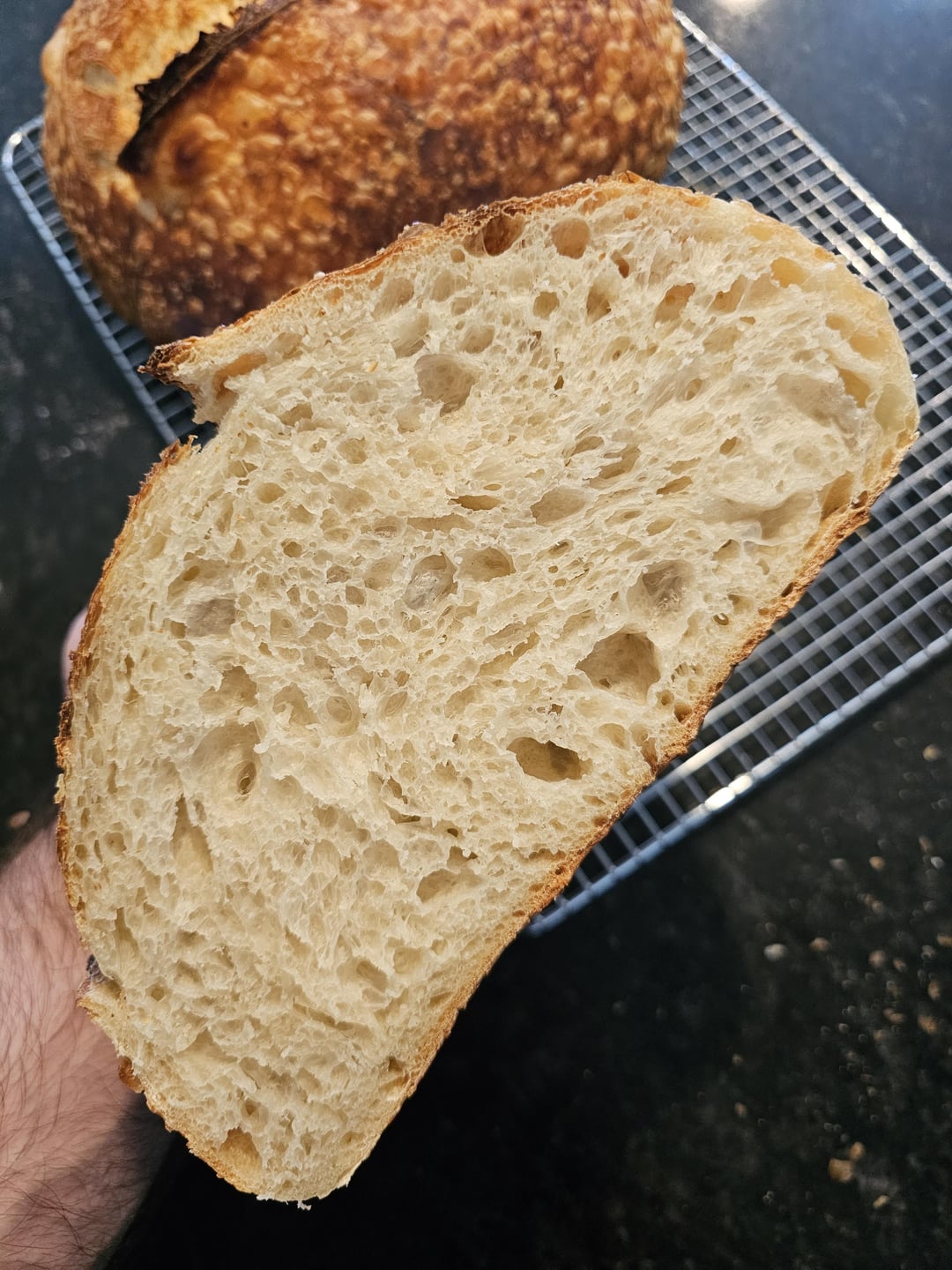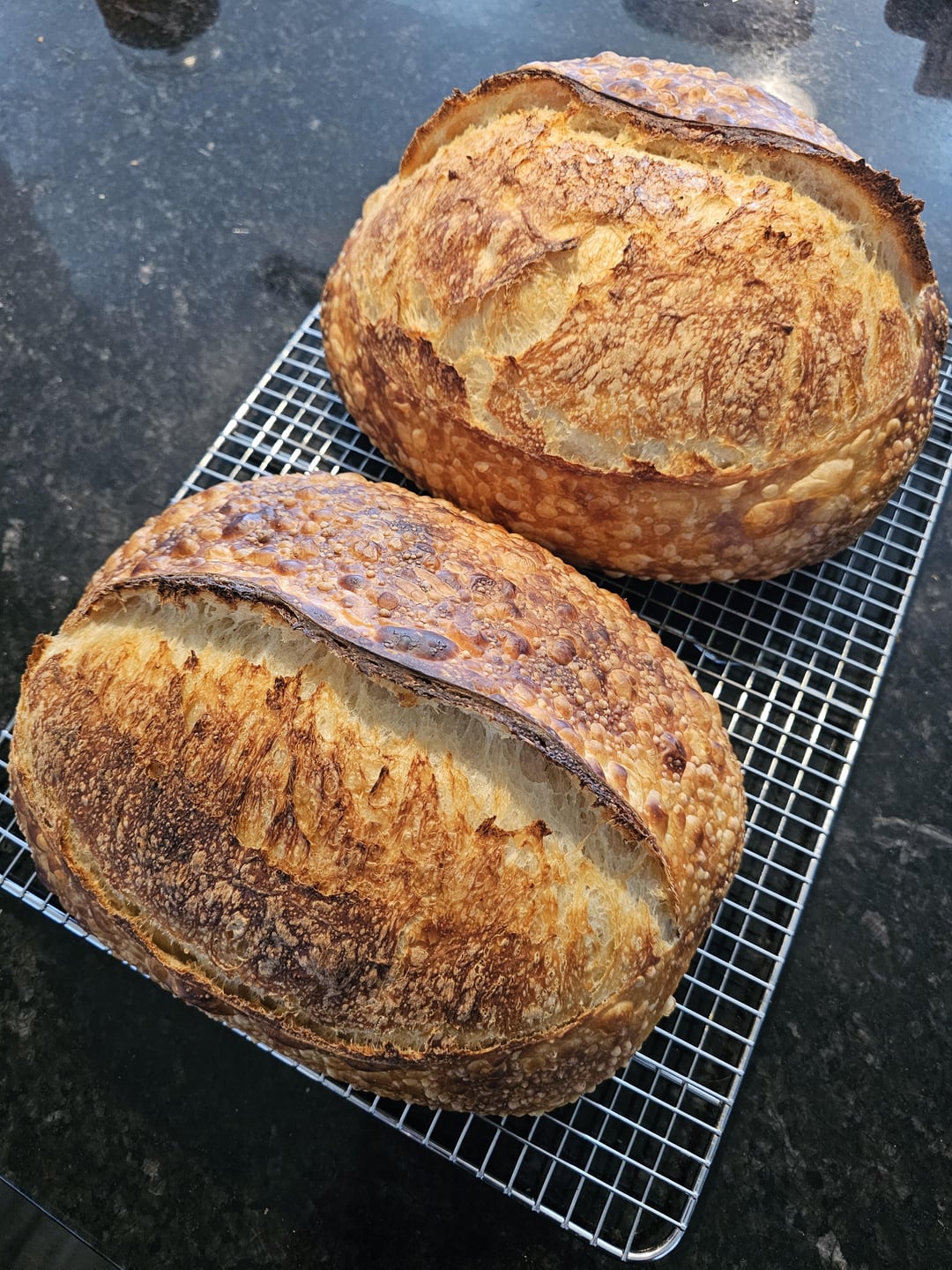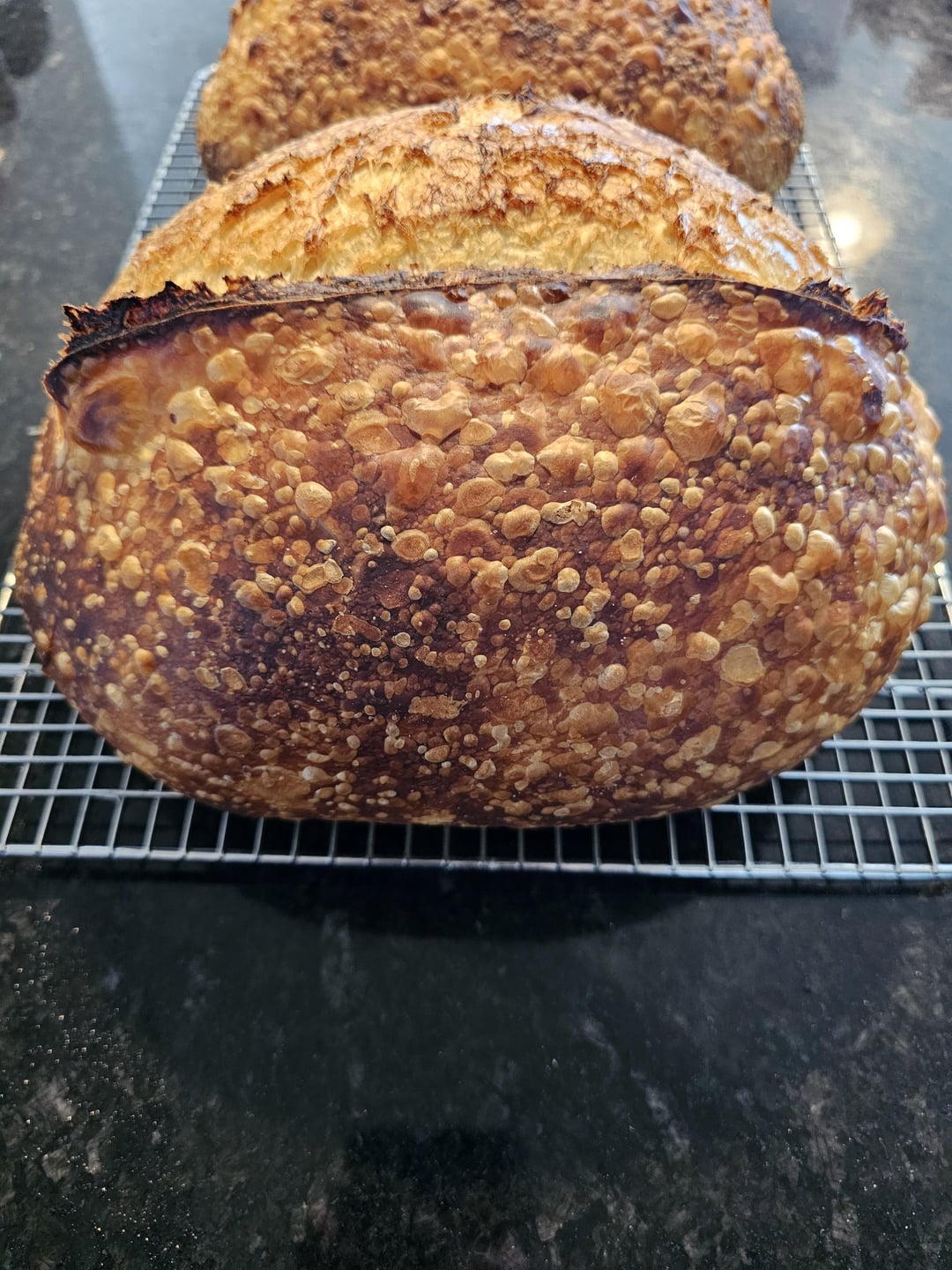


70% (ish) hydration sourdough using tangzhong method
The bread flour and water come out to about 63% hydration before adding the roux and starter, which bump it up to 70-72% depending on a few factors.
Pretty happy with these loaves even though the ears touched the top of the Dutch oven and smashed them a bit.
Highly recommend adding roux to the dough, it really changes the texture and oven spring. They're so springy that squeezing the crumb is like a cloud and the gluten strands feel like soft lace. I never got that texture before I started adding roux.
I bake at 475f for 40 minutes with the lid on and about 5-10 minutes with the lid off, it makes the crust really thin and flaky but soft and malleable.
The blisters are all about spraying the loaf with water before going into the Dutch oven.
1200g bobs red mill bread flour
750g Cold Water
150g Roux
100g Starter
25g Salt
(Full recipe in comments)
by ChicagoSunroofParty

1 Comment
1200g Bread flour
750g Cold Water
150g Roux
100g Starter
25g Salt
Roux:
Combine 100g water with 50g flour in sauce pot on the stove. Heat on lowest setting and stir until a gelatin forms.
Dough:
Combine cold water and salt in mixing bowl.
Slowly incorporate flour and roux into water and turn off mixer to allow dough to autolyse for 2-4 hours.
Remove dough from bowl and laminate as flat as possible.
Spread starter all over the surface if the stretched dough.
Fold dough back on itself, incorporating the starter without tearing the dough. Any excess air should be removed at this point.
Allow dough to rest for 30 minutes to an hour.
Perform several sets of stretch and folds 15 minutes apart. Fold the dough so that it stacks on top of itself 2-3 times per set.
The dough is ready when it stacks high and holds it’s shape.
Bulk ferment for 4-6 hours at room temperature.
Separate the dough into separate loaves and preshape with bench scraper.
Final shaping and place in banneton baskets lined with tea towels.
Create as much tension in the surface of the dough as possible and close the seam using cross stitches to hold it in place.
Proof on counter top for 2-4 hours. Dough should proof evenly with (or even overflow) the tops of the banneton baskets.
Retard dough in refrigerator overnight. It should continue to proof and bulge slightly in refrigerator.
Remove banneton baskets from refrigerator one at a time, allow 15 minutes for each loaf to proof at room temperature before placing in oven.
Preheat oven/dutch oven to 475°F.
Remove dough from banneton basket and place on folded parchment paper.
Spritz dough with water to thoroughly coat the surface.
Score dough directly on top, slightly off center and immediately place in dutch oven.
Bake at 475°F for 40 minutes covered, and another 5-10 minutes uncovered with a water dish directly under baking surface to dissipate heat from the bottom of the loaf.
Remove loaf from oven and place on cooling rack. Allow the bread to cool for at least an hour before slicing.